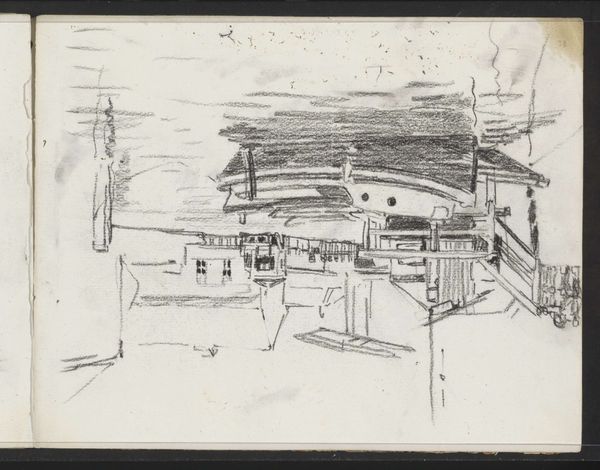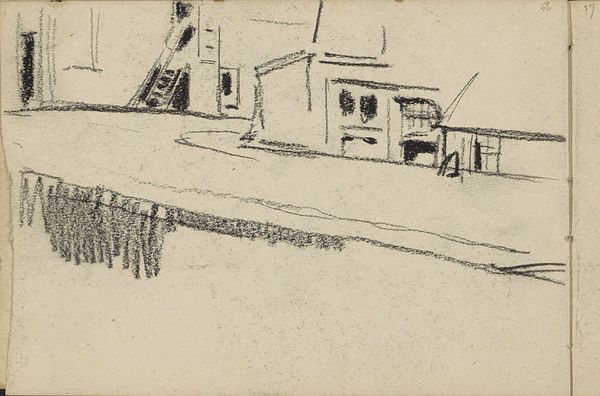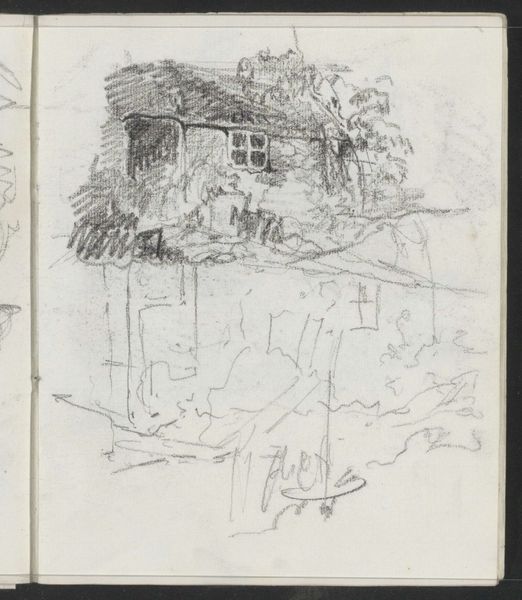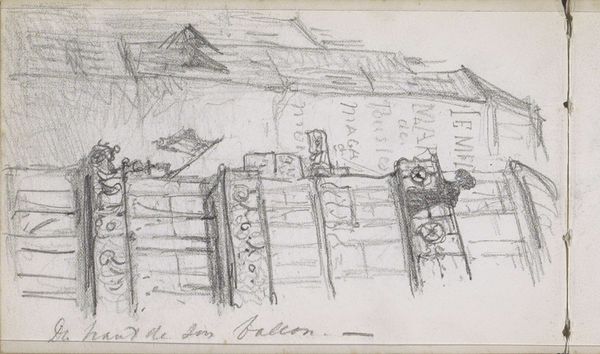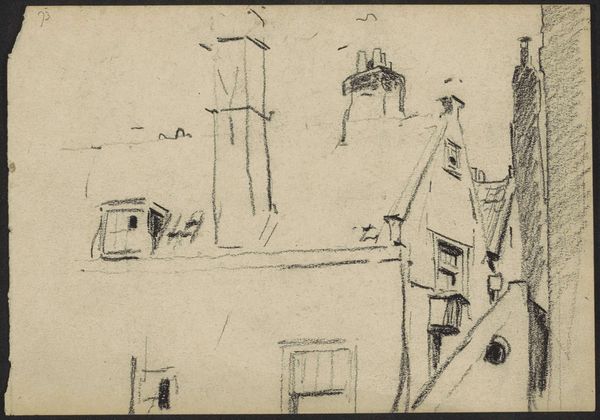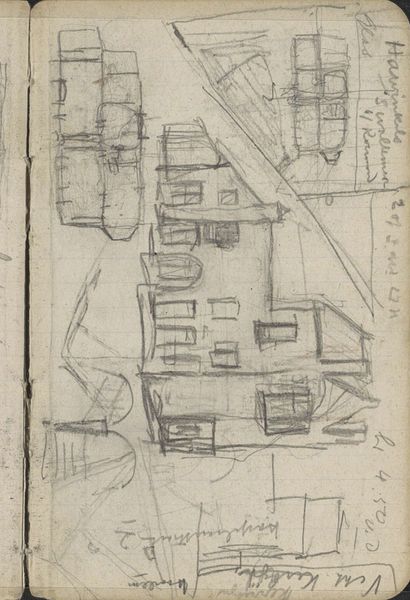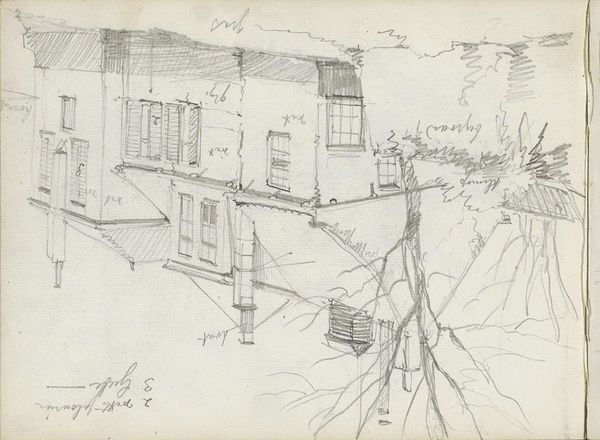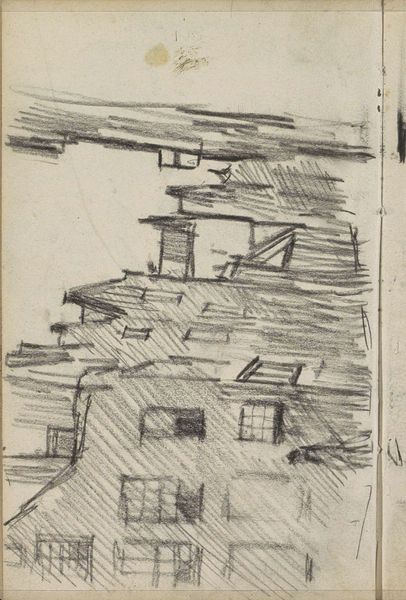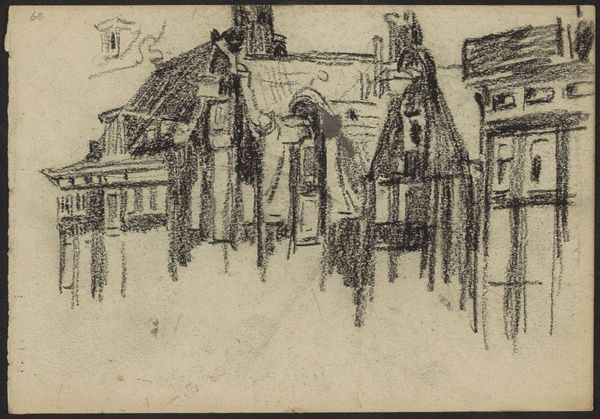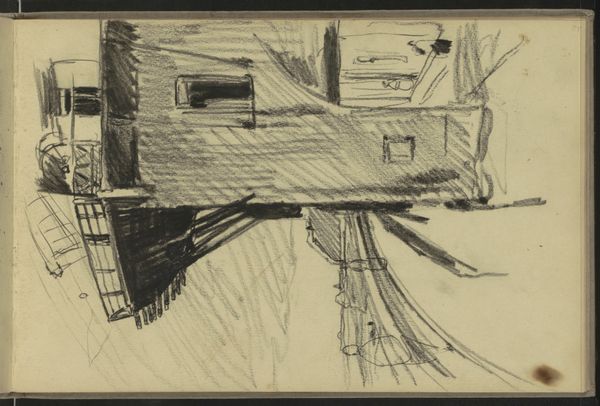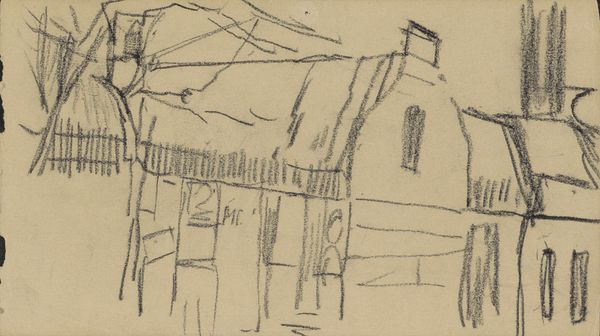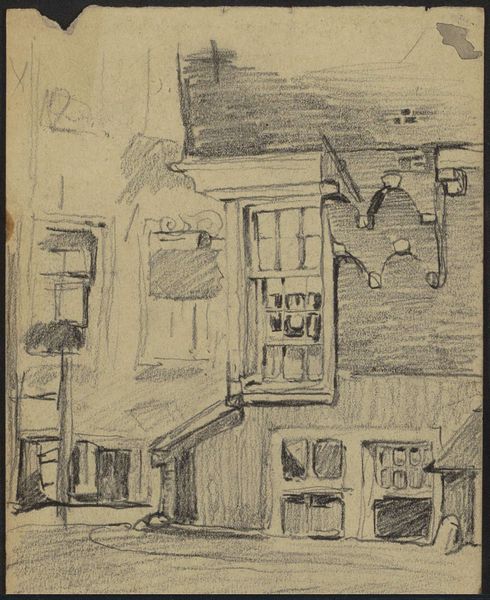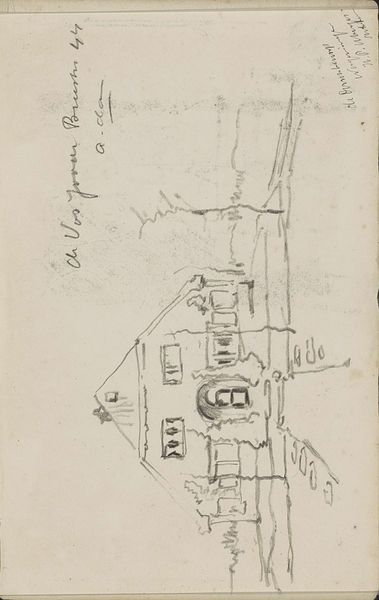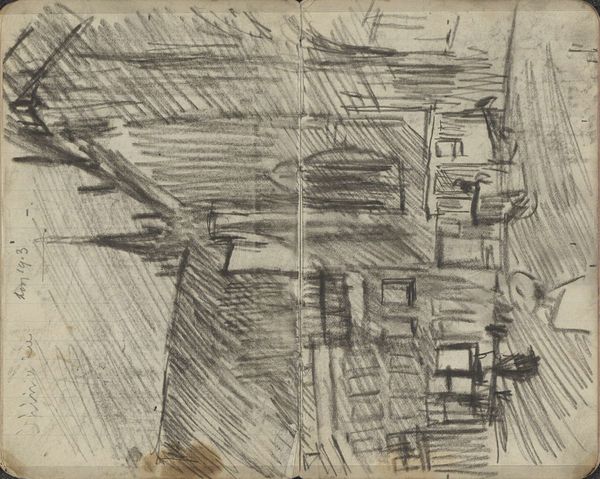
Dimensions: height 140 mm, width 200 mm
Copyright: Rijks Museum: Open Domain
Curator: Up next, we have a work titled "Twee gevels" - or "Two Facades" - by Willem Witsen. This piece, held in the Rijksmuseum, was created sometime between 1870 and 1923 and rendered in pencil. What strikes you most about it? Editor: It feels unfinished, raw. The heavy pencil strokes give it a certain weight, an almost oppressive stillness, like a city holding its breath. The roofs loom – almost a premonition. Curator: I see what you mean. There's definitely a contrast between the sharp, almost aggressive lines of the architecture and the soft, smudged areas of shading. To me, these building fronts echo earlier, often Dutch, traditions that suggest home, belonging, a community that faces a street or a shared experience. But the style seems more "in progress," which disrupts tradition. Editor: The architectural facade becomes a stage upon which to view shifts of power. Witsen isn’t simply capturing a scene; it suggests alienation, rapid change in industrializing cities, wealth gaps, or social displacement that render community obsolete. Are we even allowed inside? What does Witsen imply about a “home”? Curator: Well, let's not forget Witsen’s affiliation with the Dutch Impressionists! These artists found beauty in everyday scenes and often aimed for capturing fleeting moments, the mood and the light. Editor: And what kind of world allows “fleeting moments” as a primary value? Curator: That's fair, but this period coincides with major urban expansions across Europe, reshaping both physical landscapes and social structures. It’s no wonder artists were drawn to depicting these changing cityscapes, which for many created new symbols to experience the self. It’s exciting! Editor: Right, a changing cityscape that comes with shifting geopolitical and environmental dynamics; “cityscape” often disguises capital interests at work. Witsen's sketch becomes more than just an impression. Curator: Precisely. And the humble pencil – think of its inherent accessibility – making such grand historical observations! Editor: Perhaps Witsen can lead us to question how we can engage with and, in turn, transform the narratives embedded in our own cityscapes today.
Comments
No comments
Be the first to comment and join the conversation on the ultimate creative platform.
